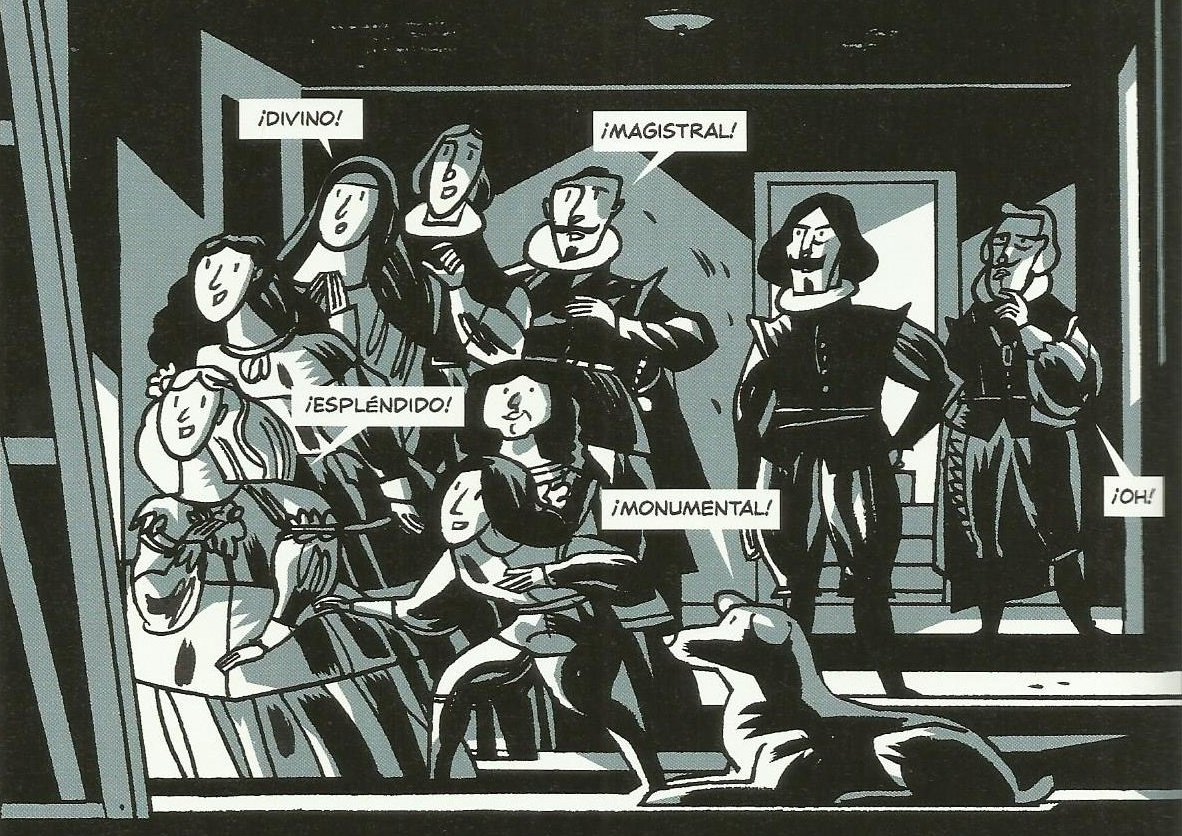Writer : Javier Olivares
Artist : Santiago García
2015, Astiberri (Spain) / Fantagraphics (USA)
Art, it should be noted, is not something that happens per se. The presence of a man performing the action is required, as a nook cannot be written by itself, nor a picture be painted by a paintbrush. This leads to two opposing points of view: on the one hand, we might be interested in who is behind that work, on the other, we might care only about the object, the final product. The first approach is typically modern, going back to the idea of the self as trying to leave a mark on world inhabited by other people (success equals immortality, although in name only), while the second goes back to many a century ago, when poets disappeared behind the writing, rewriting and expansion of long ballads (we don’t care about Homer – or Homers – after all, as what matters is the deeds of the heroes of his – her? their? – epic poem).
Las meninas (that is, The Ladies-In-Waiting) opts for the second approach, and gives us a superb account of the life and the thoughts of one of the world’s greatest painters, Diego Velázquez. Mixing reality with imagination (that is, translating into the world of fiction what could have actually happened), the end result is such that it is difficult not to keep turning the pages, wanting not only to know more, but also to delve deeper into the context surrounding the painter’s life and its reverberation throughout time.

The chronological aspect of the tale, indeed, creates points in time that are all connected to Velázquez and his works. Instead of the normal development of a biography, moving from one point to the next, writer Javier Olivares and artist Santiago García structure it using three different yet interconnected points of view: the one about the painter trying to be granted a title of nobility, the one about the painter’s life (flashbacks) and the one connecting the man with other great artists (flashforwards), so that time becomes as much as fundamental a character as the king of Spain could be.
What this play on the logical and illogical order of the movement of time entails is the highlighting of the centripetal force that Velázquez has for the simple fact of being extraordinary. We can move as far away from 17th century Spain as much as we want, so the Spanish writer and artist seem to say, in the end we will never be able to detach ourselves from what that painter managed to put on his canvases. Time plays no role, then, as the dialogue takes place out of sheer necessity, as if the shadow cast by Velázquez knows no bound, a transcendental element that lives inside and outside our world at the same time.

What and who the man was, how his dreams and thoughts played out his hopes and fears in his mind, is something we will never be able to tell. What separates us from him are hundreds of years, and no amount of intelligence and conscientiousness can help us when undertaking a biographical project. Who drew the cross on the the artist’s breast, for instance? Whatever the answer, we probably shall never know it. Did he actually say the exact words he uses in the pages of Las meninas? Obviously not. Did he travel to Italy and decided to stay more than he had been allowed by the king? Certainly.

Just as time becomes an element to bend, twist and recreate, so do the painter’s life, thoughts and words. It is here, then, that we can see another layer that gives the novel a deeper structure in its interpretation. Las meninas is not simply a biography, it is also a hymn song to the importance of art and the artist behind it, and how his influence is such that something must be said in front of the entire world. The end result is a modern painting, open to everybody, affordable, democratic in its form, a novel that not only puts on paper what the writer and the artist need to comment on Velázquez as a figure that has crossed the border of immortality, it is also a first step for us to start a new dialogue with the painter himself. Art imitating art imitating life; the glasses of time cannot be broken in the interconnection of humanity.


